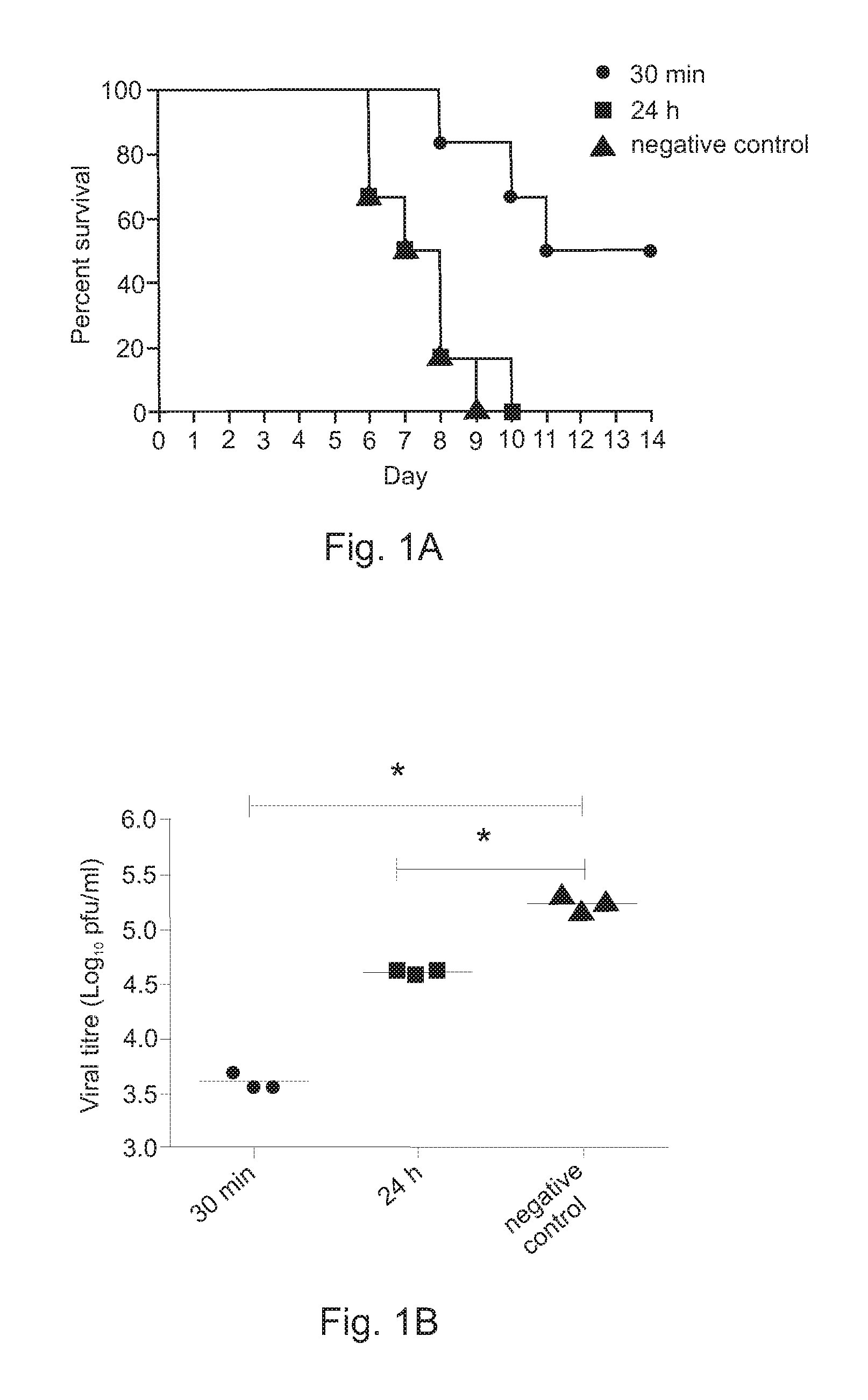Post-exposure therapy of influenza A infections
a technology for influenza a infections and post-exposure therapy, which is applied in the field of compositions and methods for post-exposure treatment of viral infections, can solve the problems of limiting the usefulness of seasonal influenza vaccines, corresponding incidence of drug resistance to these drugs, and killing millions of people worldwide, and achieves excellent survival prospects. , the effect of not losing synergistic action
- Summary
- Abstract
- Description
- Claims
- Application Information
AI Technical Summary
Benefits of technology
Problems solved by technology
Method used
Image
Examples
example 1
Post-Exposure Treatment of Mice Exposed to Influenza A Virus
[0036]To evaluate the efficacy of LE Poly ICLC and antisense oligonucleotide combination treatment against highly pathogenic avian influenza (H5N1) viral infection, groups of 8 to 10 BALB / c mice were randomly assigned as either negative control animal group (saline only), LE Poly ICLC only animal group or LE Poly ICLC and AS animal group. The groups were then challenged by intranasally infecting them with 5 LD50 of influenza / H5N1 / Henan / chicken (a representative HPA1) virus.
[0037]At 30 minutes post virus challenge, a negative control group was treated intranasally with phosphate buffered saline, an LE Poly ICLC alone group was treated intranasally with LE Poly ICLC (1 mg / kg body weight / dose) and an LE Poly ICLC and AS group was treated with LE Poly ICLC (1 mg / kg body weight / dose) and AS (20 mg / kg body weight / dose), followed by intranasal administration once per day for three days at the same dose. At 24 hours post virus chal...
example 2
Synergistic Effect of Poly ICLC or LE Poly ICLC Together with Antisense Oligonucleotides Against Influenza A / PR / 8 / 34 (H1N1) Virus Infection
[0040]Therapeutic efficacies of combination treatment using free Poly ICLC or LE Poly ICLC and antisense oligonucleotides (AS) were further evaluated to confirm that free Poly ICLC or LE Poly ICLC act synergistically with antisense oligonucleotides to treat influenza A / PR / 8 / 34 virus infection in mice.
[0041]Mice were challenged with 5 LD50 influenza A / PR / 8 / 34 (H1N1) virus, and then intranasally given free Poly ICLC (1.2 mg / kg), LE Poly ICLC (1.2 mg / kg), antisense oligonucleotide (SEQ ID NO: 4, 15 mg / kg), a combination of free Poly ICLC and antisense oligonucleotide, or a combination of LE Poly ICLC and antisense oligonucleotide at 1 and 4 hours post infection.
[0042]Post exposure treatment of influenza A infection using free Poly ICLC alone (1.2 mg / kg) was not effective and did not result in any increased survival while antisense oligonucleotide pr...
PUM
| Property | Measurement | Unit |
|---|---|---|
| volume | aaaaa | aaaaa |
| body weight | aaaaa | aaaaa |
| compositions | aaaaa | aaaaa |
Abstract
Description
Claims
Application Information
 Login to View More
Login to View More - R&D
- Intellectual Property
- Life Sciences
- Materials
- Tech Scout
- Unparalleled Data Quality
- Higher Quality Content
- 60% Fewer Hallucinations
Browse by: Latest US Patents, China's latest patents, Technical Efficacy Thesaurus, Application Domain, Technology Topic, Popular Technical Reports.
© 2025 PatSnap. All rights reserved.Legal|Privacy policy|Modern Slavery Act Transparency Statement|Sitemap|About US| Contact US: help@patsnap.com



